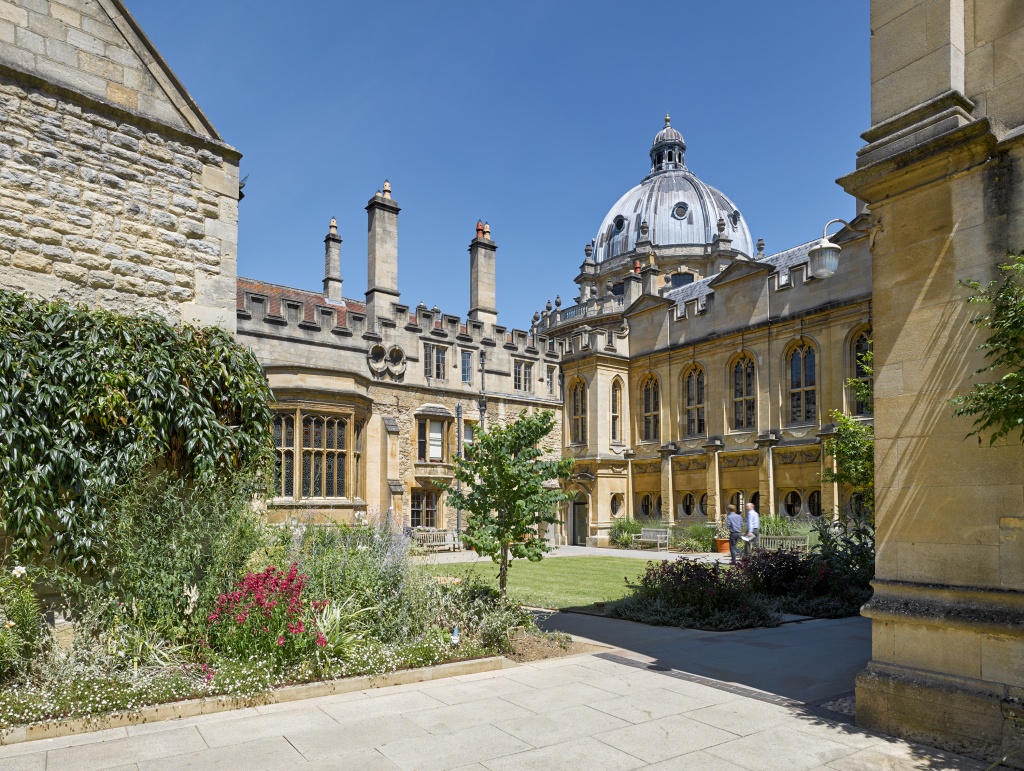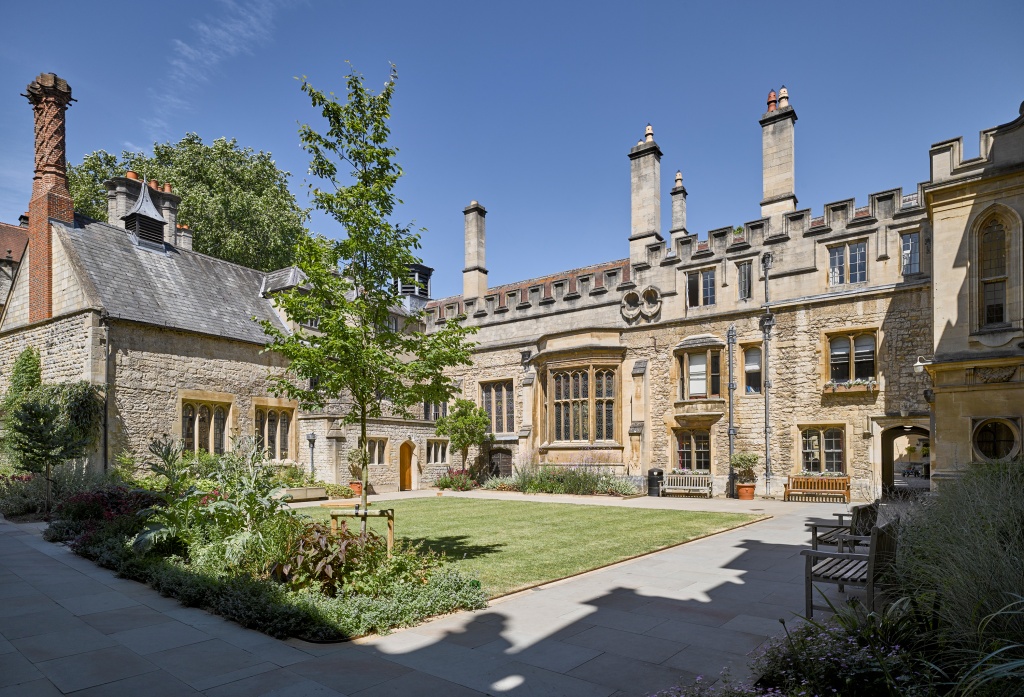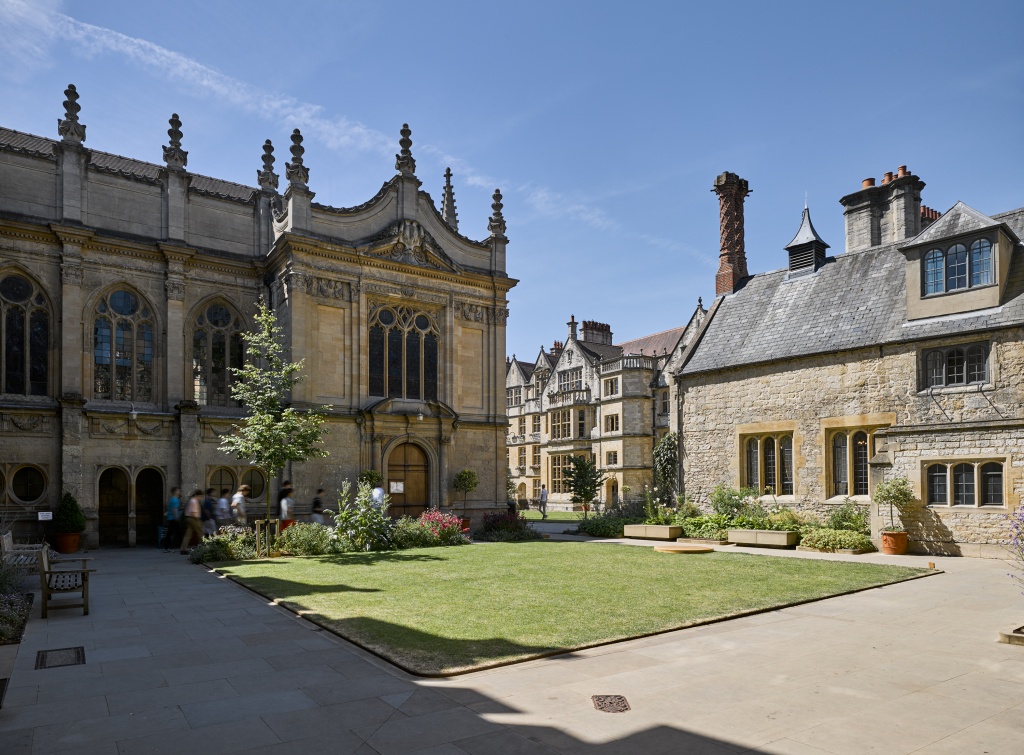The Greenland Library
Client: Brasenose College
Location: Brasenose College, Oxford
The project comprised the stripping out, rediscovery and subsequent restoration of the College’s grade I listed cloisters following extensive archaeological investigations. The cloisters were then fitted out as an extension to the College library doubling the size of the existing facility. A vertical circulation link was inserted to join the new facility to the main College library above (A James Wyatt Interior). The project also consisted the painstaking renovation and redecoration of the Wyatt interior and the refurbishment and upgrading of the linked ‘history’ library, situated in the attic storey of the adjacent ‘Old Quad’. The final part of the project comprised the creation of a new main entrance to the expanded library complex and the re-landscaping of the ‘Deerpark Quad’, onto which the facility opens.
The Cloisters project was won in limited competition, with a client brief, which requested ‘an exciting contemporary interior housed sensitively within the historic fabric of the College’.
The concept proposed for the cloisters was an archaeological one – beautifully encapsulated within the aboriginal saying
‘touching this earth lightly’.
In design terms this means revealing the inherent beauty of a place by careful siting/restoration/preservation, ensuring that one can always clearly read and understand the original, once the new has been constructed.The implication is that the ‘new’ is designed as a beautiful and complimentary object that at any time could be removed without trace.
Inherent within this idea are contrasts between old and new, so that there is no blurring of boundaries.
By adopting this concept, the project broke neatly into two separate parts: the re-discovery of the old and followed by the insertion of the new.
The new was conceived as a series of discrete interventions, more akin to furniture or art objects than to built fabric.





















